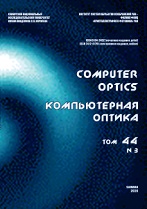|
This article is cited in 8 scientific papers (total in 8 papers)
IMAGE PROCESSING, PATTERN RECOGNITION
Image compression and encryption based on wavelet transform and chaos
H. Gao, W. Zeng
College of Information Science and Engineering, Hunan International Economics University, Changsha, China
Abstract:
With the rapid development of network technology, more and more digital images are transmitted on the network, and gradually become one important means for people to access the information. The security problem of the image information data increasingly highlights and has become one problem to be attended. The current image encryption algorithm basically focuses on the simple encryption in the frequency domain or airspace domain, and related methods also have some shortcomings. Based on the characteristics of wavelet transform, this paper puts forward the image compression and encryption based on the wavelet transform and chaos by combining the advantages of chaotic mapping. This method introduces the chaos and wavelet transform into the digital image encryption algorithm, and transforms the image from the spatial domain to the frequency domain of wavelet transform, and adds the hybrid noise to the high frequency part of the wavelet transform, thus achieving the purpose of the image degradation and improving the encryption security by combining the encryption approaches in the spatial domain and frequency domain based on the chaotic sequence and the excellent characteristics of wavelet transform. Testing experiments show that such algorithm reduces the memory consumption and implements the complexity, not only can decrease the key spending and compress the time spending, but also can improve the quality of decoded and reconstructed image, thus showing good encryption features with better encryption effect.
Keywords:
image encryption, wavelet coefficient, chaotic system.
Received: 25.05.2018
Accepted: 25.03.2019
Citation:
H. Gao, W. Zeng, “Image compression and encryption based on wavelet transform and chaos”, Computer Optics, 43:2 (2019), 258–263
Linking options:
https://www.mathnet.ru/eng/co643 https://www.mathnet.ru/eng/co/v43/i2/p258
|

| Statistics & downloads: |
| Abstract page: | 182 | | Full-text PDF : | 134 | | References: | 35 |
|




 Contact us:
Contact us: Terms of Use
Terms of Use
 Registration to the website
Registration to the website Logotypes
Logotypes








 Citation in format
Citation in format 
